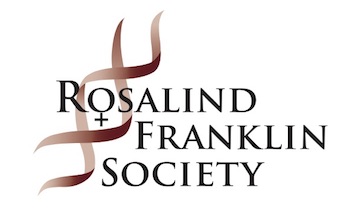RFS Briefings - June 8, 2021
Dear Colleagues,
I am pleased to include another issue of RFS Briefings with some timely and encouraging updates on women in science.
A few highlights to focus on here include upcoming prizes and awards:
- Do you know of someone who has promoted sound science in the face of hostility? Nominations are open for the 2021 John Maddox Prize for Standing up for Science. Read more.
- Nominations are now open for Research!America’s 2022 Advocacy Awards! The awards recognize individuals and organizations whose commitment to advocacy for research and innovation has advanced medical and public health progress in profoundly important ways. Read more.
- The deadline to apply for a Vilcek Prize for Creative Promise in Biomedical Science is June 11. In 2022, the Vilcek Foundation will award 3 prizes of $50K to immigrant scientists whose research represents a significant contribution to their field. Read more.
- Apply now for the Eppendorf & Science Prize for Neurobiology 2021! The prize is awarded annually to one young scientist who is not older than 35 years for the most outstanding neurobiological research based on molecular and cell biology. Read more.
- STAT is now accepting applications for the Sharon Begley-STAT Science Reporting Fellowship, a new program with the goal of diversifying the ranks of science and health journalists and fostering better coverage of science that is relevant to all people. The Chan Zuckerberg Initiative provided $225,000 to support the first two years of the program, which is named in honor of Sharon Begley, an award-winning science writer for STAT, who died in January 2021 at 64, from complications of lung cancer. Mary Ann Liebert was thrilled to interview her at our 2018 Colloquium at the Wistar Institute. You can WATCH it here. Read more.
See below for more news about women in science
Please continue to share important news and opportunities with us so that we may share it with you, and others who are committed to supporting the careers of exceptional women in science.
Stay safe and sound,
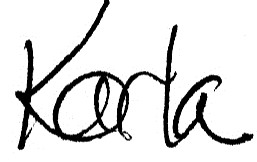
Karla Shepard Rubinger
Executive Director
Rosalind Franklin Society
www.rosalindfranklinsociety.org
Congratulations to Dr. Jirayut “New” Latthivongskorn and Dr. Denisse Rojas Marquez for receiving the 2021 Vilcek-Gold Award for Humanism in Healthcare.
Congratulations to Dr. Jirayut “New” Latthivongskorn and Dr. Denisse Rojas Marquez for receiving the 2021 Vilcek-Gold Award for Humanism in Healthcare. The award embodies the missions of both the Vilcek Foundation and the Gold Foundation: It shines a spotlight on outstanding immigrant healthcare professionals and celebrates the positive impact that accessible and humanistic care has on public health. Read more.
Forbes unveils its inaugural 50 Over 50 list highlighting the women who are proving that success has no age limit.
Forbes unveiled its inaugural 50 Over 50 List highlighting the women who are proving that success has no age limit. The list is filled with top-notch health industry leaders including Katalin Karikó, a biochemist and senior vice president at BioNTech, who pioneered research in mRNA technology which is fundamental to Covid-19 vaccines. Other healthcare honorees include: Rosalind Brewer, 58, who was named CEO of the Walgreens Boots Alliance this year, making her the only Black woman at the helm of an S&P 500 company. Nobel Prize-winning chemist Jennifer Doudna, 57, who is renowned for her work in CRISPR gene editing, which holds tremendous promise for future gene therapies to cure some rare diseases. And Karen Lynch, 58, the president and CEO of CVS Health, which has played a crucial role in distributing Covid-19 vaccines across the U.S. Read more.
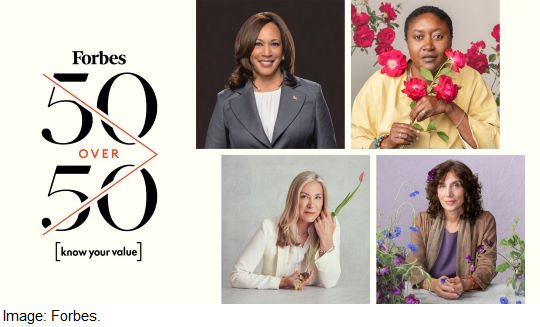
Five science stars making their mark in China.
China’s push to strengthen its standing in science opens opportunities for exploration. In this article, Nature highlights the scientists who are driving discoveries in physics, energy, medicine and the natural world. Read more.
Biden’s pick to lead Department of Energy science signals focus on climate and diversity.
Last month, President Joe Biden tapped Asmeret Asefaw Berhe, a soil scientist at the University of California (UC), Merced, to lead the Department of Energy’s (DOE’s) basic research wing, the Office of Science. The office has a $7 billion annual budget and is best known for funding physics, running national laboratories, and building atom smashers and other scientific megamachines. The nomination of Berhe, 46, suggests the office will increasingly emphasize research related to climate change, scientists say. Read more.
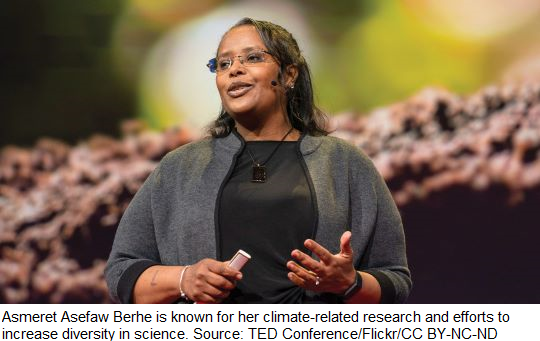
Asian American scientists in STEM classrooms: increasing inclusion and visibility.
Last month, NOVA PBS celebrated the Asian American and Pacific Islander Heritage Month. Learn about Asian and Pacific Islander American scientists who have helped change the world, and the call for greater inclusion of their work in curriculum and textbooks. Read more.
The MIT Press breaks new ground with STEM-themed young-adult graphic fiction.
“The Curie Society” is a STEM-themed action-adventure graphic novel for young adults, the first publication in this genre in the press's nearly 60-year history. Created by Heather Einhorn, Adam Staffaroni, Janet Harvey, and Sonia Liao, “The Curie Society” follows a team of young women recruited by an elite secret society with the mission of supporting the most brilliant female scientists, engineers, and technologists in the world. Read more.
First woman appointed Scotland's Astronomer Royal.
An astrophysicist from Edinburgh University, Prof. Catherine Heymans, is the first woman to be named Astronomer Royal for Scotland. She was recommended to the Queen for the role by an international panel, convened by the Royal Society of Edinburgh. Prof Heymans said she wanted to use the almost 200-year-old title to encourage people to develop passion for science. Read more.
Local glacier could be gone in a decade, young scientist finds.
“Climate change is coming for glaciers. Many are losing ice as summers get warmer and winters are bringing less fresh snow to build them up again. But to know when exactly a glacier will be gone, scientists first have to know how big it is. That is why Ellery McQuilkin, 16, trekked up a glacier with a large drill in tow. To find out how big the glacier was, she drilled holes in it,” writes Bethany Brookshire for Science News. Read more.
Interview with theoretical physicist Chiara Marletto: ‘The universal constructor could revolutionize civilization’.
Chiara Marletto, a research fellow at Wolfson College, University of Oxford, studies theoretical physics – especially quantum computation, thermodynamics and information theory. In this interview for The Guardian, she talks about “The Science of Can and Can’t: A Physicist’s Journey Through the Land of Counterfactuals”, her first non-academic book which attempts to forward a new foundational basis for physics. Read more.
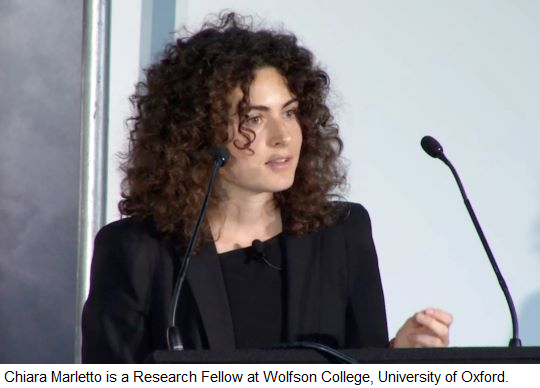
Looking beyond the female firsts of science history.
From the ancient world to the present, women have been critical to the progress of science, yet their importance is overlooked and their stories are often lost, distorted or actively suppressed. Forces of Nature is a new book that sets the record straight and charts the fascinating history of women’s discoveries in science. Read more.
Meet Gerty Cori, the Nobel-winning biochemist who uncovered how the body stores and consumes sugars.
“In 1947, Gerty Cori traveled to Switzerland with her husband, Carl, to jointly accept the Nobel Prize in Medicine and Physiology. It was an undoubtedly exciting moment. The Coris had received the Prize for their successful test tube synthesis of glycogen. From their discoveries, scientists now knew exactly how glycogen was processed in the body to create glucose – a once mysterious metabolic process that had confounded researchers for decades,” writes Maggie Chen for Massive Science. Read more.
Space enthusiast uses TikTok to teach others about the moon, Mars, and beyond.
Alyssa Carson is a 20-year-old who first made headlines as the "youngest astronaut in training" — and the first person to visit every NASA visitor center in existence by the age of 13. She's coordinating a group of six other women for an expedition that will include scuba diving to simulate space walks and staying as isolated as possible. They plan to publish their research afterward, and she'll be sharing her experience with her more than 483,000 Instagram followers and 115,000 TikTok followers. Read more.
Elizabeth Berry-Kravis: Running a marathon for fragile X syndrome.
Elizabeth Berry-Kravis has spent decades uncovering molecular clues to fragile X syndrome and crafting trials of treatments. Her efforts are paying off. No matter how busy she is, Berry-Kravis wakes up to run 4 to 6 miles almost every morning, something she has done since running track in high school. She has completed two marathons, including one in 2014 that she ran as a symbol of the long road to fragile X drugs. Read more.
500 Women Scientists is seeking an Executive Director.
500 Women Scientists is seeking an Executive Director to lead their organization into the future and fully realize their mission to change the world through the lens of justice, equity, diversity, and inclusion (JEDI) in STEMM. The Executive Director will be responsible for all executive, strategic, programmatic, financial, and management functions of 500 Women Scientists, including leading fundraising efforts and overseeing their programs and initiatives. Read more.
To retain women, U.S. companies need better childcare policies.
While the U.S. government lags behind on policies to help working families, companies can and should be acting sooner. So, what can business leaders do today to keep even more women from leaving the workforce? 1) Engage women in conversation. 2) Revisit ideas and reset. 3) Assess current pace, productivity, and performance expectations. 4) Acknowledge parents. 5) Fix the gender pay divide. 6) Reexamine your benefits system. 7) Fortify communication. 8) Offer parental perks. 9) Take a fresh look at paternity leave. Read more.
The queer Victorian doctors who paved the way for women in medicine.
“By establishing women's medical colleges and hospitals, these 19th-century pioneers helped open the profession of medicine to women. One of the biggest hurdles for women medical students at the time was finding a place to receive practical training and internships, and then a job. Most establishments invariably turned women away. These hospitals filled that need,” writes Olivia Campbell. Read more.
Marianna Limas, Social Media Manager
Nilda Rivera, Partnership and Events Manager
|



